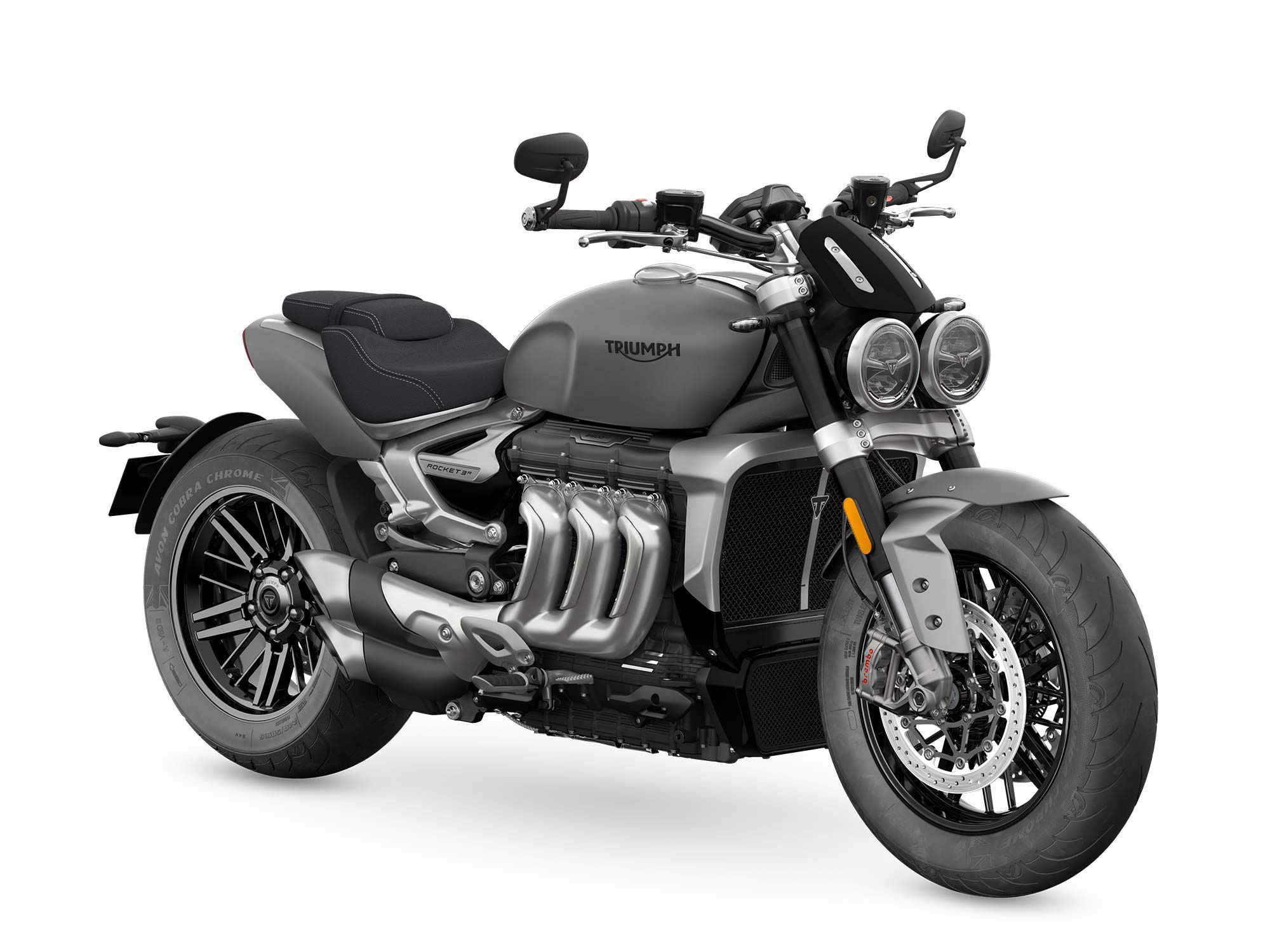
Ups
- Big, brawny engine (163 lb.-ft. of torque!)
- Almost 90 pounds lighter than previous-gen bike
- Handles far better than it should
- Roadster design much better than previous cruiser style
Downs
- You’re still piloting a near-675-pound motorcycle
- Rear brake underpowered
- Rocket 3 R’s handlebar a little too low
- Rear tire budget
Verdict
Like King Kong deciding to go to the gym, Triumph made the original Rocket III engine bigger and stronger in 2020. But it also received a better chassis, adjustable suspension, new wheels/tires, and equally beefy brakes, while losing almost 90 pounds. The latest Rocket 3 (note the name change) is light-years ahead of the previous model in the handling department. Plus the roadster styling and design better suits the Rocket 3 over its previous cruiser persona. If you want the biggest, baddest, tire-roastingest roadster out there, and you also want to go around corners surprisingly well, look no further.
Overview
When the first-generation Rocket III made its debut in 2004, it was designed as a big-displacement cruiser with windscreen and saddlebags. Engine size was becoming a marketing angle for manufacturers, with Yamaha’s Road Star engine growing to 1,670cc, Honda’s VTX1800 at 1,795cc, and Kawasaki’s Vulcan at 2,053cc. Triumph decided to go all in, creating an inline DOHC three-cylinder displacing a gargantuan 2,253cc, making it the largest-displacement production engine in the motorcycle space. The Rocket III was well-received for the most part, but the massive lump of an engine never really found a big audience with the cruiser crowd, and Triumph continually massaged and tweaked the big three with numerous iterations over the years in an attempt to find its market.
The Hinckley firm went back to the drawing board, and came out with a revamped Rocket in 2020 that dumped the cruiser design for a much-improved roadster style, now designated the Rocket 3. Engine size grew to 2,458cc in addition to dropping more than 40 pounds (!), and the old steel twin-spar frame was replaced by an aluminum backbone chassis. That chassis is significantly smaller and 50 percent lighter with a single-sided swingarm incorporating built-in shaft drive; in all, the Rocket 3 scales in nearly 90 pounds less than its predecessor. Showa suspension is fully adjustable at both ends, and there’s suitably fat rubber with a 150/80-17 front tire and a 240/50-16 out back. The amazing result is a monster roadster that not only goes like hell in a straight line, but can also carve twisty pavement far better than you’d think would be possible for a 675-pound-or-so bike.
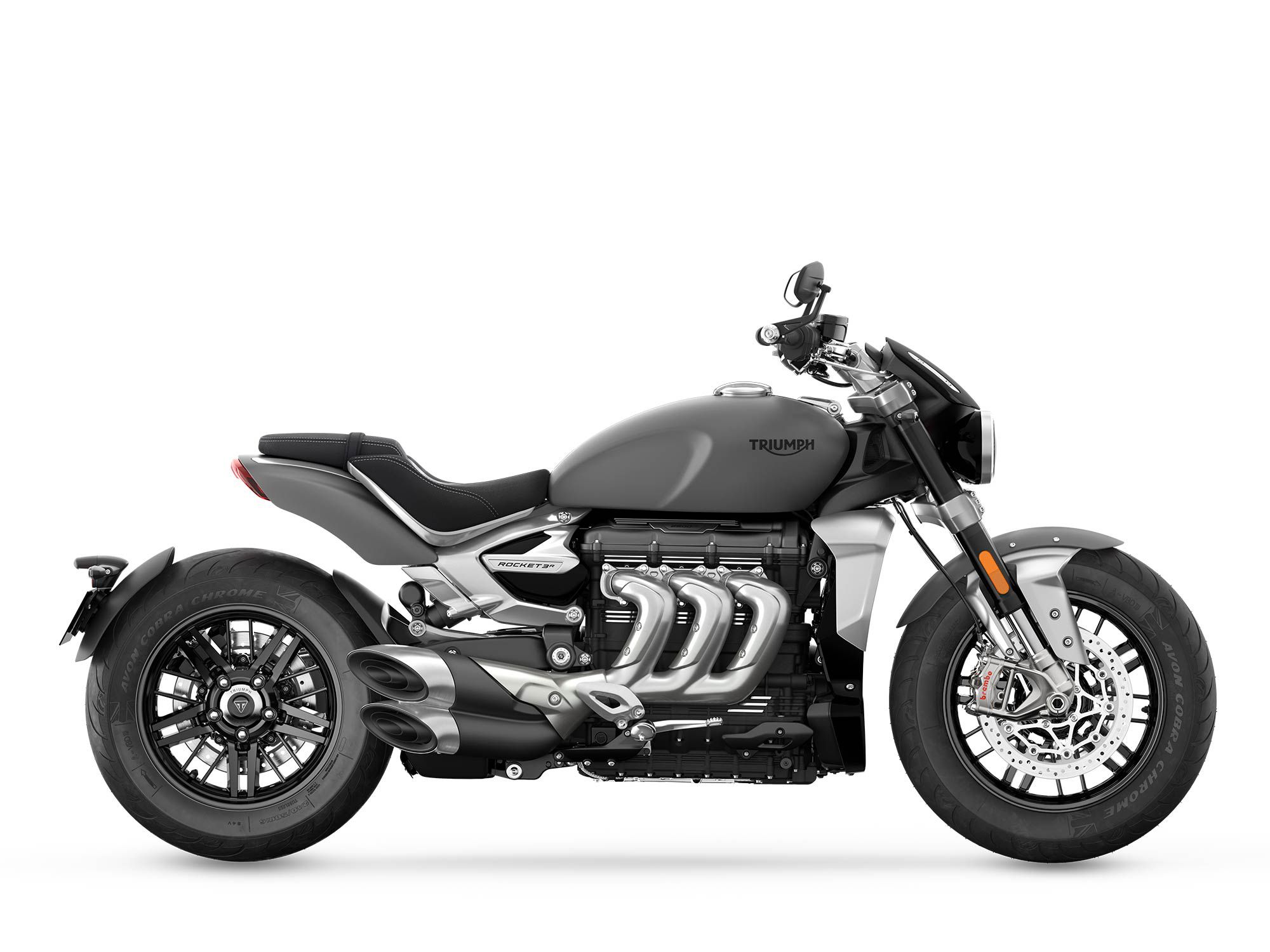
Updates for 2023
Updates are limited to color options for 2023. The Rocket 3 R, the ultimate muscle roadster, comes in three colors, including a new Sapphire Black, a Silver Ice and Cranberry Red paint scheme, plus a new Matt Silver Ice option. This new scheme features Matt Silver Ice fuel tank, front mudguard, and rear bodywork together with Jet Black side panels, headlight bowls, fly screen, and radiator cowls.
The Rocket 3 GT comes in two new color options: a new Sapphire Black, and Carnival Red and Sapphire Black scheme, with hand-painted silver coach line detailing.
The new Carnival Red and Sapphire Black scheme features a Carnival Red tank, front mudguard, and rear bodywork, premium hand-painted silver coach lining and Sapphire Black side panels, fuel tank infill, headlight bowls, fly screen, and radiator cowls.
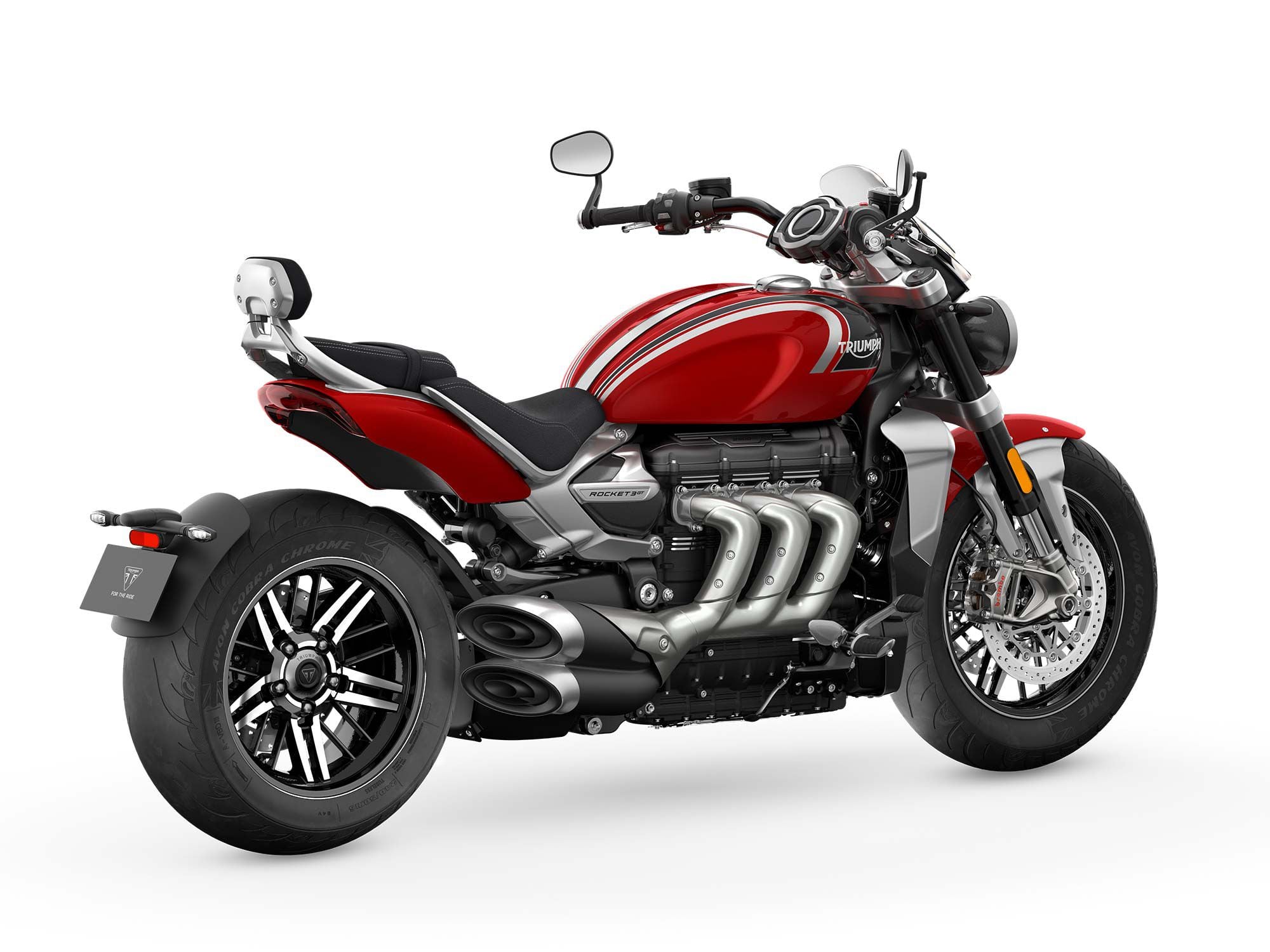
Variants
There are two basic variants of the Rocket 3. The Rocket 3 R is the sportier of the two with a flatter handlebar and footpegs that are located in a conventional location; the Rocket GT has a higher and pulled-back handlebar bend, small fly screen, a passenger backrest, and more forward-set footpegs for a more laid-back riding position.
Pricing
The Rocket 3 R sells for $23,400, while the Rocket 3 GT retails for $24,100.
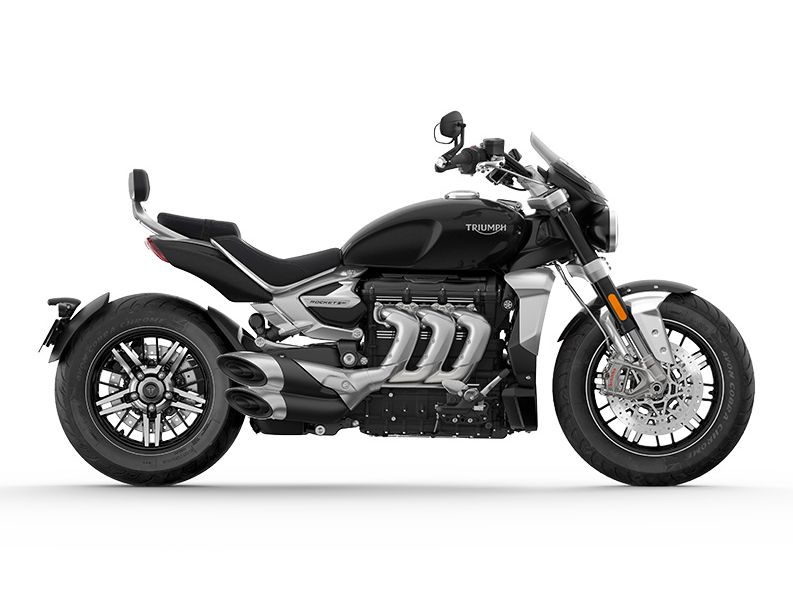
Competition
As a big muscle roadster, the Triumph Rocket 3′s only real competition is the Ducati Diavel 1260.
Powertrain: Engine, Transmission, and Performance
The Rocket 3′s 2,458cc three-cylinder behemoth of an engine produces a claimed 165 hp at 6,000 rpm, but the real eye-opener is the claimed torque figure: 163 lb.-ft. at 4,000 rpm. No other motorcycle currently in production comes close; its main competition, Ducati’s Diavel 1260, comes up 68 lb.-ft. short, and even BMW’s big K 1600 six-cylinder can only muster 133 lb.-ft.
CW’s Justin Dawes put it this way in his First Ride Review: “Turn the TC off and you will quickly find the rear tire overwhelmed by the torque, spinning easily at the drop of the hydraulic torque-assist clutch. And then a boiling, rolling spin-up after the shift to second followed by a squirmy chirp into third.”
With the TC on, combined with the Rocket 3′s long 66-inch wheelbase, low 30-inch seat height, and very relaxed steering geometry, the Triumph accelerates like, well, a rocket.
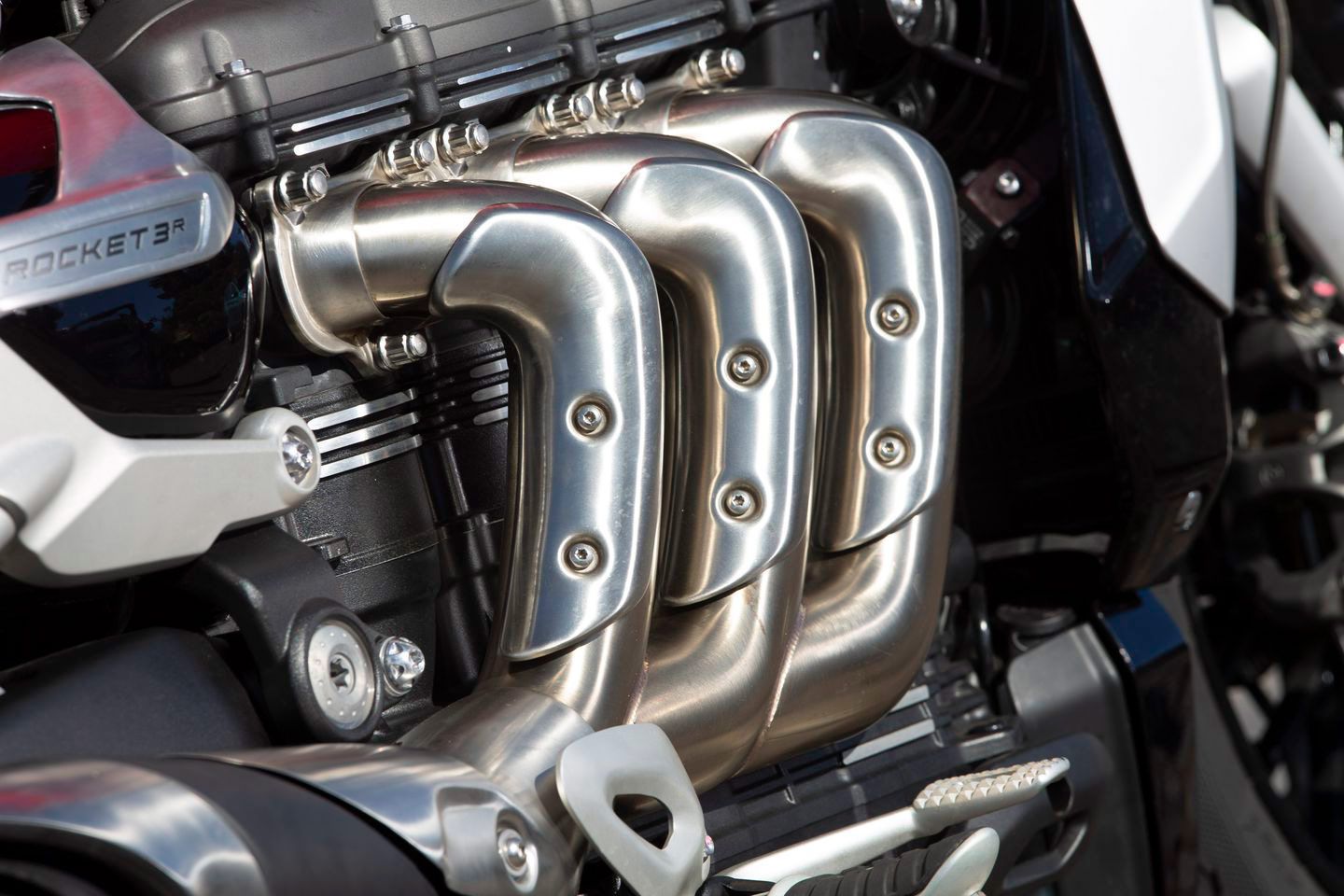
Handling
Here’s the crazy part. Despite its ocean-liner 66-inch wheelbase, chopperish 27.9-degree rake angle of the fork, and hefty 650-plus-pound weight, the Rocket 3 actually shreds twisty pavement with surprising aplomb. Dawes elaborates: “Tipping into a corner takes little effort despite the bulbous 150mm front and 240mm rear tires. Cornering clearance is ample and stability is unshakable with a composed suspension action that follows the road well and doesn’t come unglued when the road is less than perfect.… In short, it goes around the corner much better than a quarter-ton-plus, 2,500cc, fat-tired motorcycle should have a right to.” Both the stout 47mm Showa inverted cartridge fork and single rear shock are fully adjustable.
Brakes
Thankfully Triumph saw fit to equip the Rocket 3 with serious braking power up front to complement its monster speed-generation capabilities. A pair of Brembo M4.30 four-piston radial-mount Monoblock Stylema front calipers squeezing 320mm discs provide superb braking power and feel, with a strong initial bite that helps get the slowing party started without requiring an initial death grip on the lever. Unfortunately the rear brake isn’t as epic as the front, with its good power masked by mushy, muddled feel at the pedal.
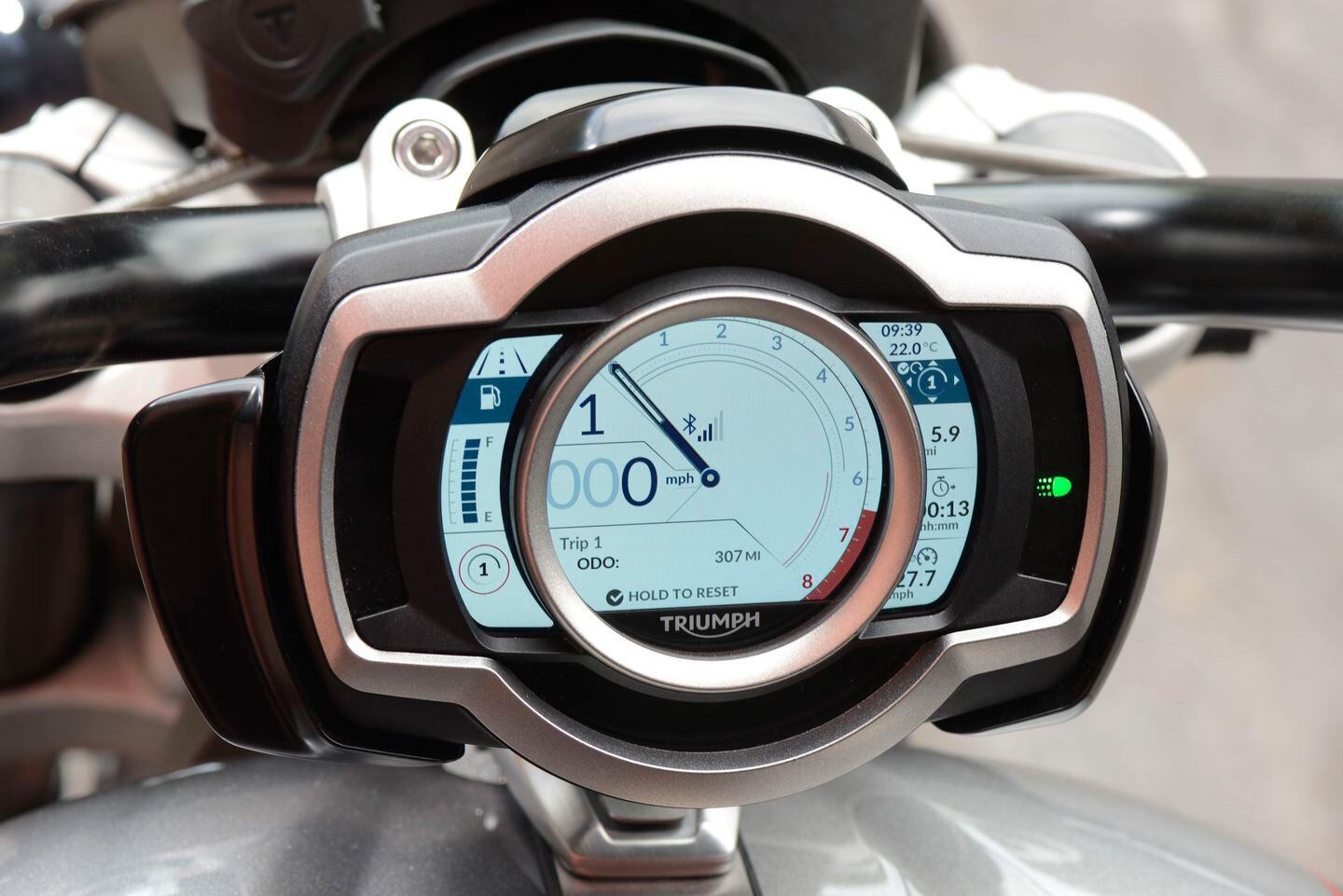
Fuel Economy and Real-World MPG
Triumph is claiming 32.4 mpg for all versions of the Rocket 3.
Ergonomics: Comfort and Utility
The Rocket 3 R’s ergos are more sport-oriented than the Rocket 3 GT. The R model’s flatter handlebar is a longer reach from the seat that brings your torso forward, and its footpeg location is more conventional, providing slightly better ground clearance than the GT’s more cruiser-style forward-set footpegs (which can be adjusted fore or aft by 25mm; both Rocket’s footpegs can also be lowered 25mm from the standard position).
Likewise, the GT’s handlebar bend is higher and rearward for a more upright torso position. The GT’s seat is slightly lower (29.5 inches versus 30.4 for the R model), and the passenger seat has a small padded backrest.
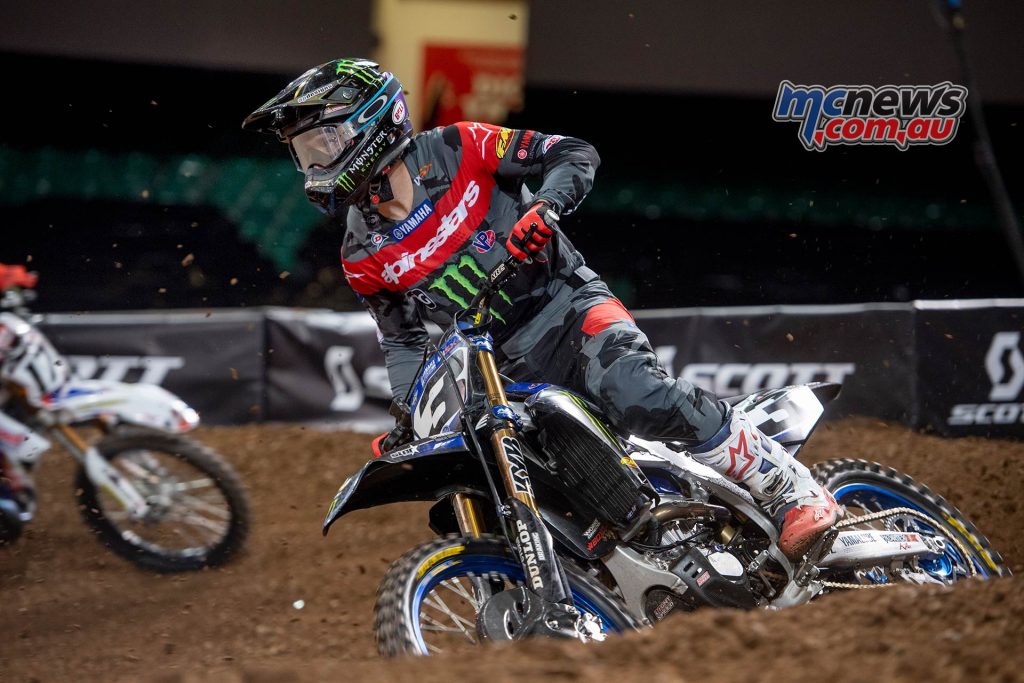
Electronics
The Rocket 3 comes with three ride modes (Rain, Road, Sport) with preset power, throttle response, traction control, and Cornering ABS settings, while Rider mode allows custom configuration of those settings.
Hill hold, cruise control, and keyless ignition are standard with both Rocket 3 models, and heated grips come with the GT. The dashboard is shaped like an analog tach, but is actually a full-color TFT display that is easily readable. Lighting is now all-LED.
Warranty and Maintenance Coverage
The Rocket 3 comes with Triumph’s 24-month unlimited-mileage warranty. Additional coverage is available through Triumph.
Quality
The new-generation Rocket 3 is light-years ahead of the previous generation as far as fit and finish and overall quality. Gone are details like the ugly exhaust pipe clamps and excess wiring zip-tied to the frame; the bike as a whole looks like it was designed as a motorcycle from the beginning, instead of a tractor engine shoehorned into a motorcycle frame.
2022 Triumph Rocket 3 R/GT Claimed Specifications
| MSRP: | $23,400 (R)/$24,100 (GT) |
|---|---|
| Engine: | 2,458cc, DOHC, liquid-cooled inline 3-cylinder; 12 valves |
| Bore x Stroke: | 110.2 x 85.9mm |
| Transmission/Final Drive: | 6-speed/shaft |
| Fuel Delivery: | Electronic fuel injection |
| Clutch: | Wet, power assist; hydraulic operation |
| Engine Management/Ignition: | Ride-by-wire/TCI |
| Frame: | Double cradle aluminum chassis |
| Front Suspension: | 47mm Showa inverted fork, fully adjustable; 4.7 in. travel |
| Rear Suspension: | Showa shock, fully adjustable; 4.2 in. travel |
| Front Brake: | Brembo M4.30 Stylema Monoblock radial-mount 4-piston calipers, dual 320mm discs w/ Cornering ABS |
| Rear Brake: | Brembo M4.32 Stylema Monoblock 4-piston caliper, 300mm disc w/ Cornering ABS |
| Wheels, Front/Rear: | Cast aluminum; 17 x 3.50 in. / 16 x 7.50 in. |
| Tires, Front/Rear: | 150/80R-17 V / 240/50R-16 V |
| Rake/Trail: | 27.9°/5.3 in. |
| Wheelbase: | 66.0 in. |
| Ground Clearance: | N/A |
| Seat Height: | 30.4 in. (R)/29.5 in. (GT) |
| Fuel Capacity: | 4.8 gal. |
| Claimed Dry Weight: | 642 lb. (R)/648 lb. (GT) |
| Contact: | triumphmotorcycles.com |
Source: MotorCyclistOnline.com
